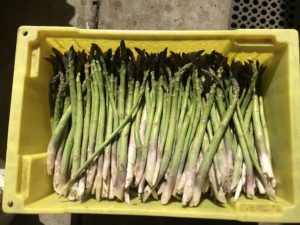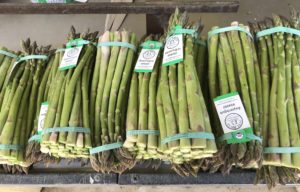
There is no shortage of ways to tell that it’s spring on a farm, but my favorite is probably when we start harvesting asparagus. It’s delicious, here for a relatively short period of time, is the only perennial vegetable we grow, and is fascinating for more reasons than that, thus worth taking a deep dive.
Full Belly Farm first grew asparagus in the 90s. Today we have eight acres, split between two fields. We grow UC-157, one of many varieties developed by the University of California. We’ve tried other varieties but have settled on this for its disease resistance and it’s timing. Some of the other varieties we tried sprouted earlier and were more likely to be damaged by frost. If we’d been growing that this year, the damage from the recent frost would’ve been much more serious instead of the damage we saw to just the first of this year’s spears.
The root structure of an asparagus plant is called a crown, and what we eat are spears that emerge each spring. When you plant asparagus, you can plant seeds directly, you can transplant small plants (3-4 months after you’ve seeded them in a greenhouse), or you can transplant one-year-old crowns. We’ve done all three at various points in time. We purchased crowns for our first asparagus fields and we still would if we could, but with changes in the asparagus industry (more on this later) those businesses have closed and that option is gone so our current fields were planted with transplants. If we started asparagus seed in the field or greenhouse today, we wouldn’t be able to harvest until 2025. Planting crowns reduces the amount of time you need to wait for the plants to establish before you can harvest. If you plant crowns, you can harvest in two years instead of needing to wait three.
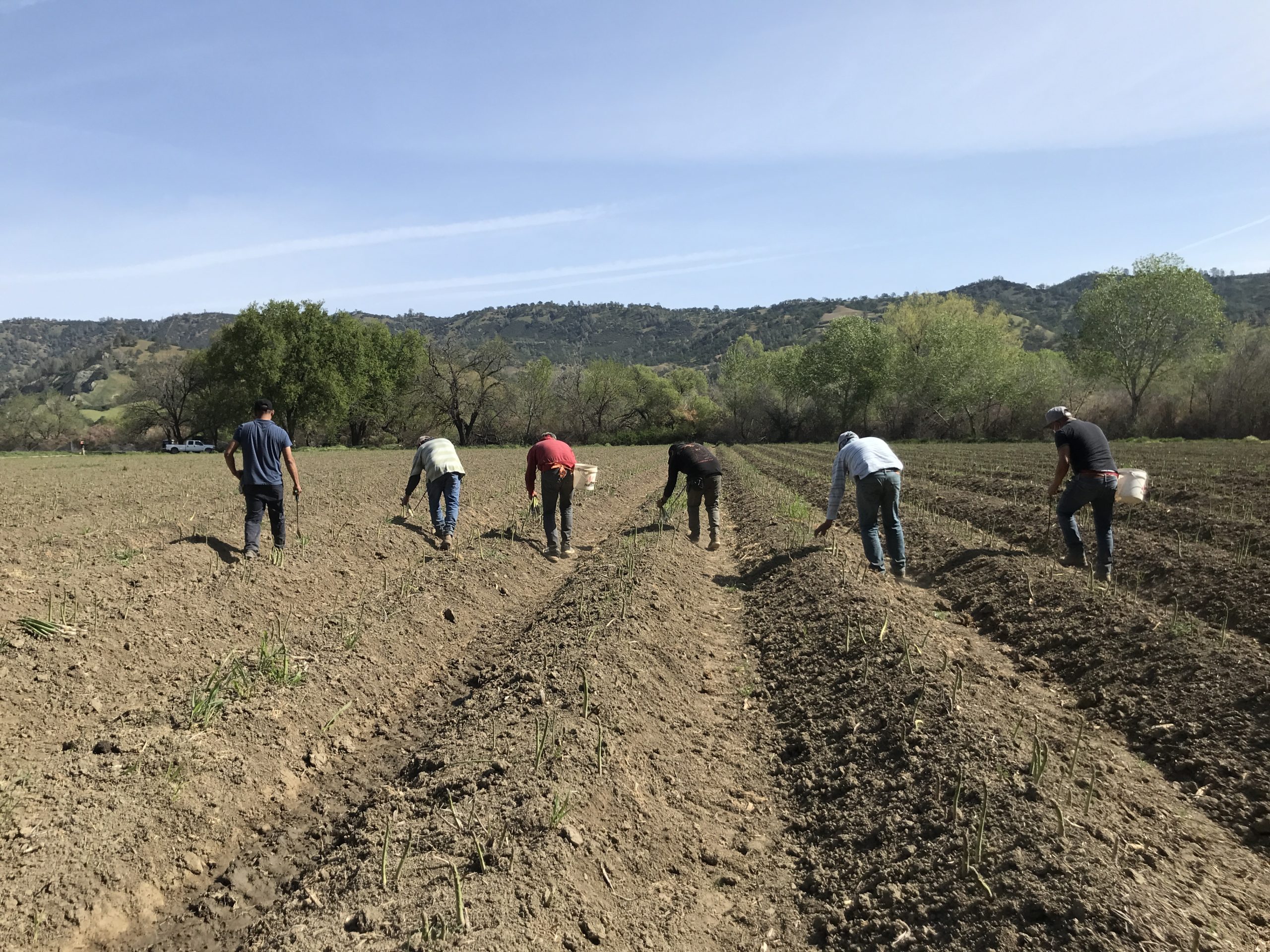
Once established, we’ll harvest from an asparagus field for about 12 years, though the plants will produce for longer than that. Asparagus has a dormant and active period. When temperatures are warm enough, the spears emerge from the soil. The spears grow fast (ranging from three to seven inches per day) and asparagus must be harvested daily, especially in warm temperatures. Asparagus harvest isn’t mechanized; it’s all done by hand. Our asparagus crew goes through each row with special asparagus knives, some with flat ends, others with “teeth” and cut each spear right at the surface. Some harvesters carry buckets attached to belts for the asparagus while others prefer to form small piles. A tractor follows the harvesters and two other members of the crew walk behind the tractor to load the asparagus into harvest crates.


We harvest asparagus for about 12 – 14 weeks. We know it’s time to stop harvesting when there’s too much sun and heat and the tips of the asparagus start to open up while the plants are still small. We let those spears grow and open up into ferns which photosynthesize over the summer, sending nutrients to the crowns. In fall, we mow the ferns (which are around five feet tall) and then the asparagus goes dormant until the next spring when the spears emerge again. While the plants are dormant, it’s a key time to combat the primary asparagus “pest” we deal with, Johnson grass, which has outcompeted asparagus in some of our past fields, and to apply compost.
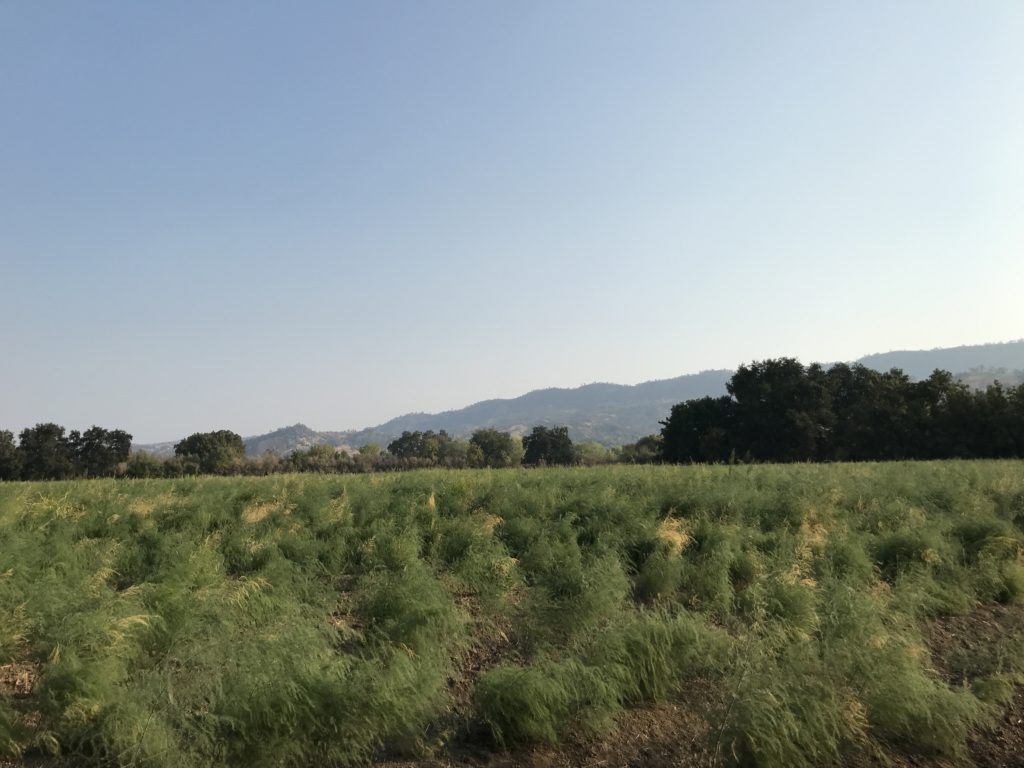
Asparagus is a labor-intensive crop. Once the asparagus is harvested, it’s brought back to our packing crew who sort, bunch, and trim the asparagus so that all bunches have similarly-sized spears and tips and ends that line up. Just like harvesting, this also is all done by hand, though some operations have some machinery that helps speed up the trimming process.
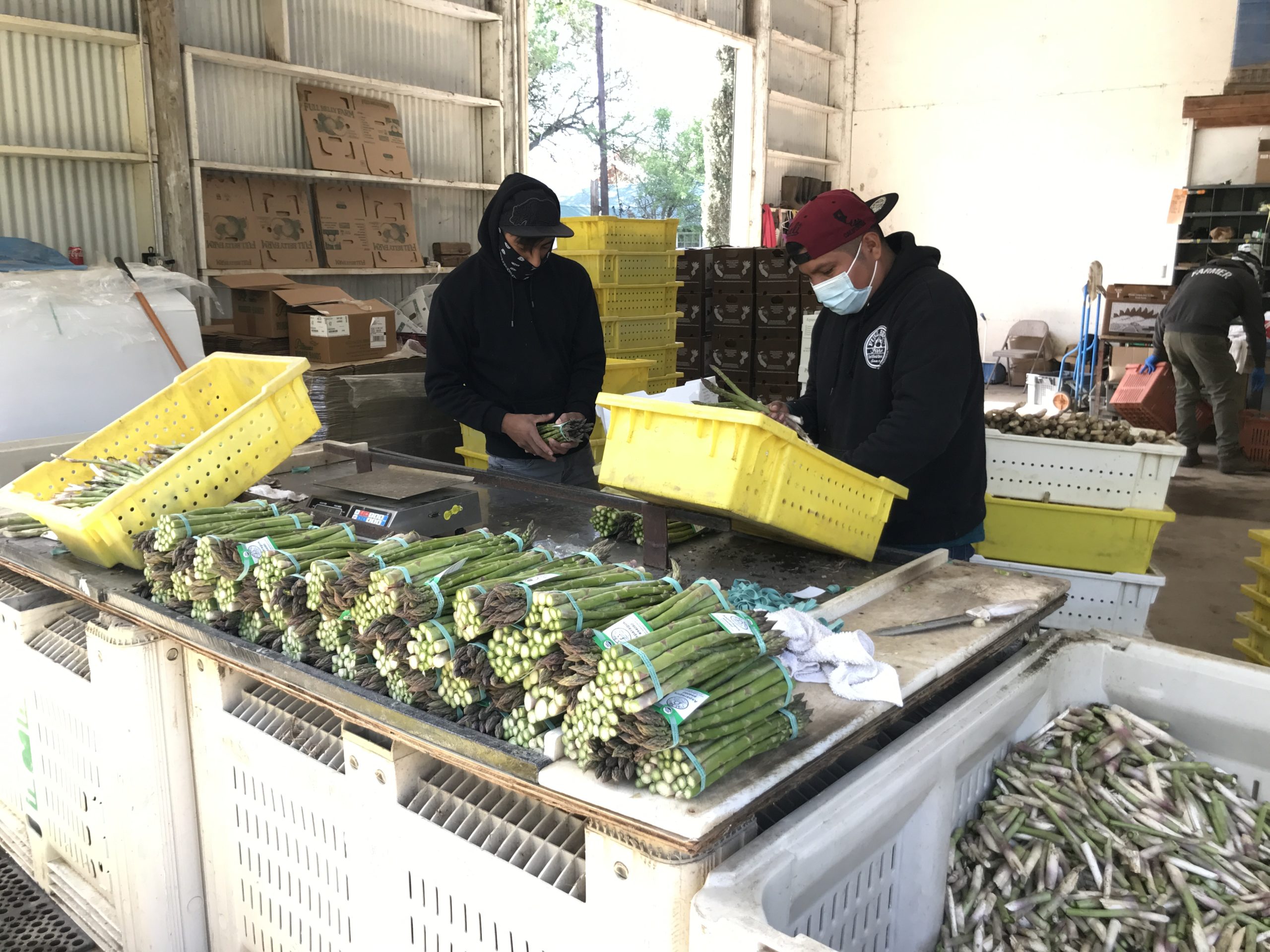
Once packed, asparagus is highly perishable and needs to be kept moist and hydrated. When you get your bunch home, trim a small amount from the stems and store in the refrigerator with the stems in an inch or two of water, ideally covered with a plastic bag.
As alluded to above, the asparagus industry in California has changed. California still grows more asparagus than any other state in the US (reported to be as much as 70% of US production), but the amount of asparagus grown here has been decreasing rapidly in recent decades. In 1988, there were 40,000 acres of asparagus grown in California. It was 15,000 in 2008 and 6,200 in 2018. The asparagus bunches found year-round in stores are from countries with cheaper labor, primarily Mexico and in South America (Peru and Ecuador). The disappearance of local asparagus growers has implications for us -our local supplier for crowns has gone out of business, and our asparagus is competing with the cheaper, and more well-traveled (making it less fresh and sweet), asparagus.
We aren’t planning to throw in the towel on our asparagus production. It’s a farm favorite and we hope it’s one of yours too. Asparagus is here for a relatively short period, so enjoy it while it’s here!
– Elaine Swiedler, CSA Manager
